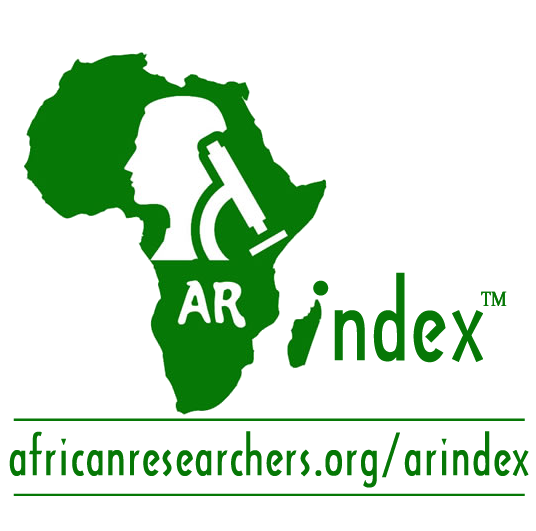SEROPREVALENCE OF HUMAN PAPILLOMAVIRUS (HPV) AMONGST PATIENTS ATTENDING THE GENERAL PRACTICE CLINIC(GPC), UNIVERSITY OF BENIN TEACHING HOSPITAL (UBTH), BENIN CITY, EDO STATE, NIGERIA.
DOI:
https://doi.org/10.52417/njls.v3i1.103Keywords:
Seroprevalence, Human papilloma virus (HPV), Male, Female, UBTH.Abstract
Human papillomavirus (HPV) infection is one of the most common sexually transmitted infections (STIs) worldwide, presenting with high prevalence and transmissibility. A total of consented one hundred and ninety-two (192) male and female subjects attending the General Practice Clinic (GPC), University of Benin Teaching Hospital (UBTH) were recruited for this study. The seroprevalence to HPV was determined using the Enzyme-linked immunosorbent assay (ELISA) measuring IgG. The seroprevalence for IgG to HPV in the population studied was 5.7 %. Subjects within 30-34 and 35-39 years age groups recorded the highest IgG seroprevalence while those within age groups 15-19 and ?50 years recorded the lowest IgG seroprevalence. The female subjects (n=171) recorded 10 (5.8 %) prevalence of IgG positivity, the male subjects (n=21) recorded 1(4.8 %) prevalence of IgG positivity. Various risk factors for HPV infections namely multiple sex partners, smoking, alcohol and other miscellaneous factors contributed to the seroprevalence of IgG among the subjects studied. In a decreasing order, multiple sex partners accounted for the seroprevalence of IgG recording 80 %, followed by alcohol (50 %), cigarette smoking (33.3 %) and miscellaneous risks (16.7 %). The direct relationship between risk factors associated with HPV infections was significant both at p<0.05 and p<0.01. The statistical relationship between age and sex on IgG seroprevalence among the participants was insignificant (p>0.05). Routine screening of blood donors should be encouraged, methods of screening should be employed for better and accurate evaluation of HPV prevalence.
Published
Issue
Section
License
Copyright (c) 2013 https://unibenlsj.org.ng/index.php/njls/

This work is licensed under a Creative Commons Attribution 4.0 International License.





